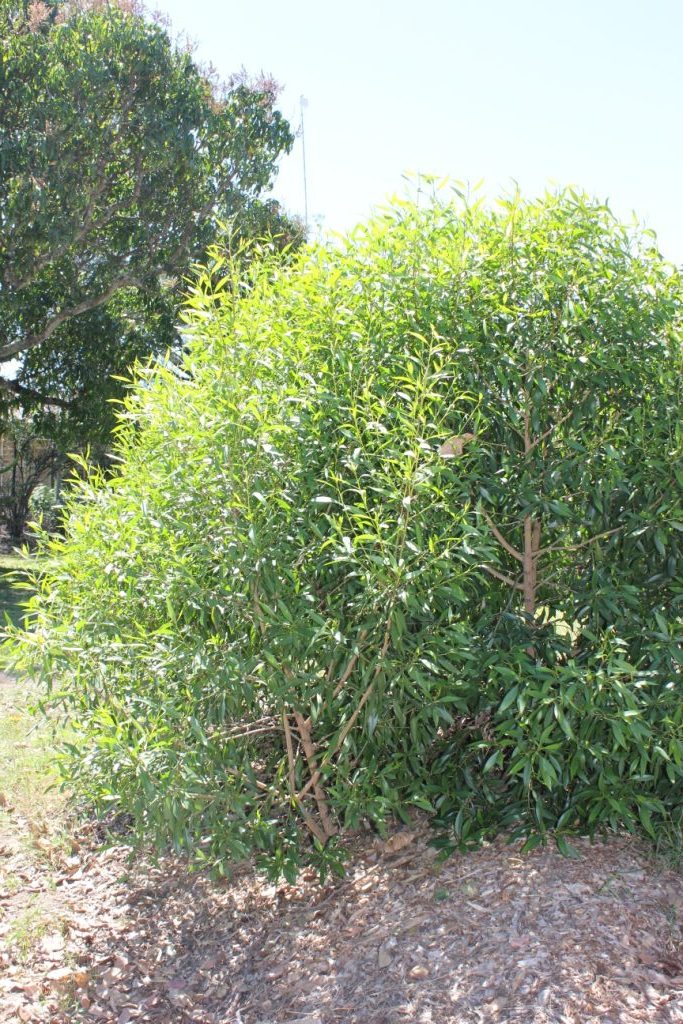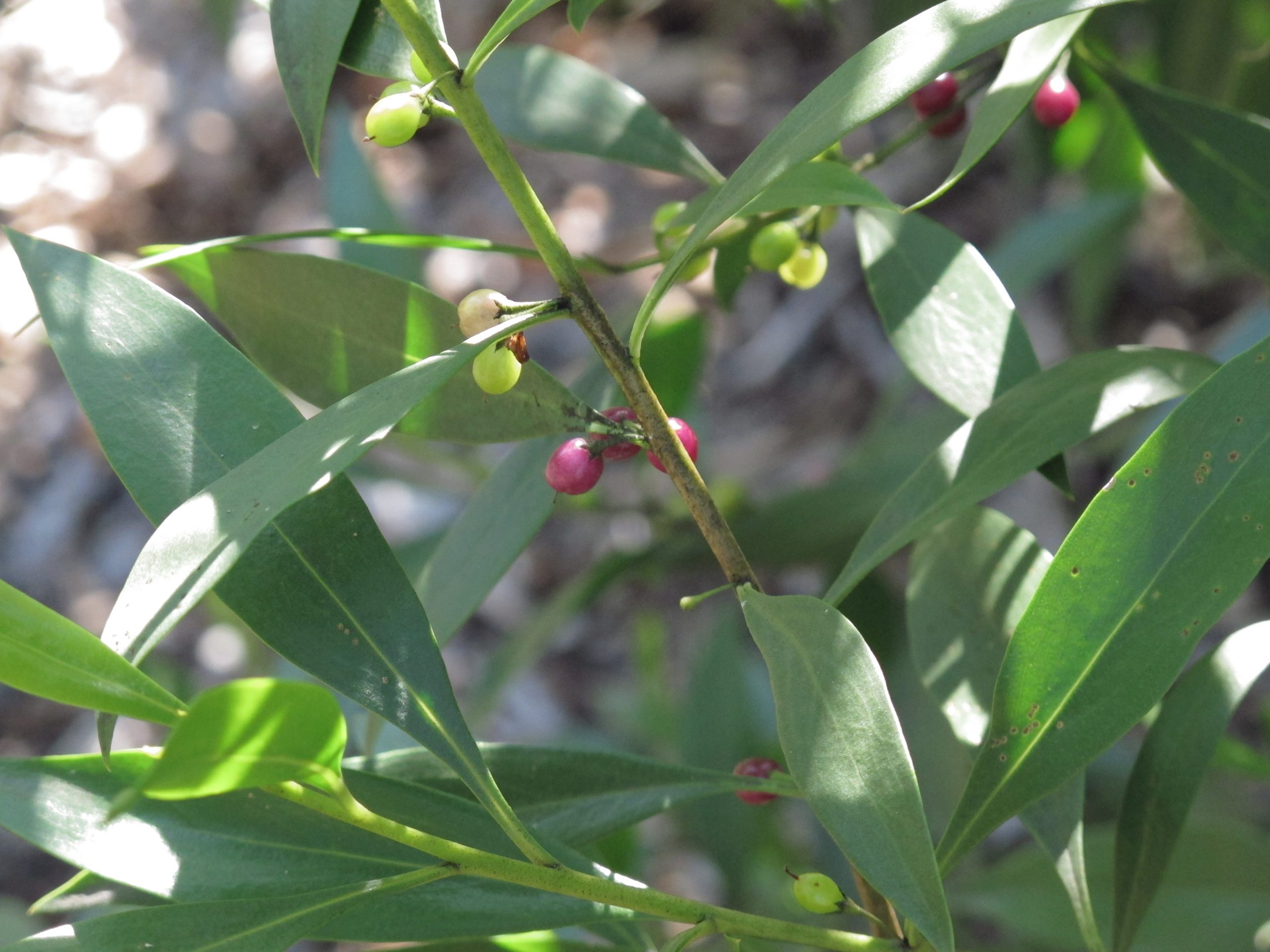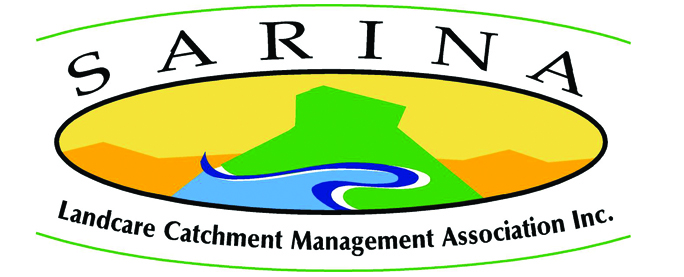Mangrove boobialla
Myoporum acuminatum, Fam. Myoporaceae


Small, often crooked shrub or tree with a slightly flanged trunk or a prostrate shrub. Greyish to pale brown, fissured or wrinkly bark in older trees.
| Weed Category: | |
| Weed: | No |
| Form or habit: | Shrub, Small tree |
| Family: | Myoporaceae |
| Leaf: | Simple, alternate, entire or with obscure teeth near the apex, narrowly elliptic to oblanceolate, 6-12cm long; soft and somewhat fleshy, glabrous, bright green. Venation obscure except for midrib that is sunken above and raised beneath, oil dots numerous and just visible to the naked eye. |
| Flower conspicuous: | Conspicuous |
| Flower colour: |
White |
| Flower description: | Axillary clusters of small white flowers, sweetly fragrant. Flowering most months of the year. |
| Fruit conspicuous: | Conspicuous |
| Fruit colour: |
Black, Blue, Purple |
| Fruit: | |
| Fruit description: | Blue or purple black when ripe, globular drupes, 4-8mm in diameter. Persistent, hooked style, surface dull and rough on drying. |
| Habitat: | Coastal dune, littoral rainforest, mangroves. |
| Distribution | Queensland, New South Wales, Northern Territory, South Australia, Western Australia, New Guinea, America. |
| Food source for: | Fruit eaten by birds. |
| Toxicity: | No toxicity known |
| Origin: | Australia, New Guinea, America. |
| Notes: | The fruit are edible and have a sweet, salty taste if completely ripe. Useful plant for exposed coastal sites. Aborigines used the white gum from the stems as glue and some used the leaves as medicine. Timber yellowish, soft, brittle and non-durable. |
| Information sources: | Melzer R. & Plumb J. (2007) Plants of Capricornia. |



